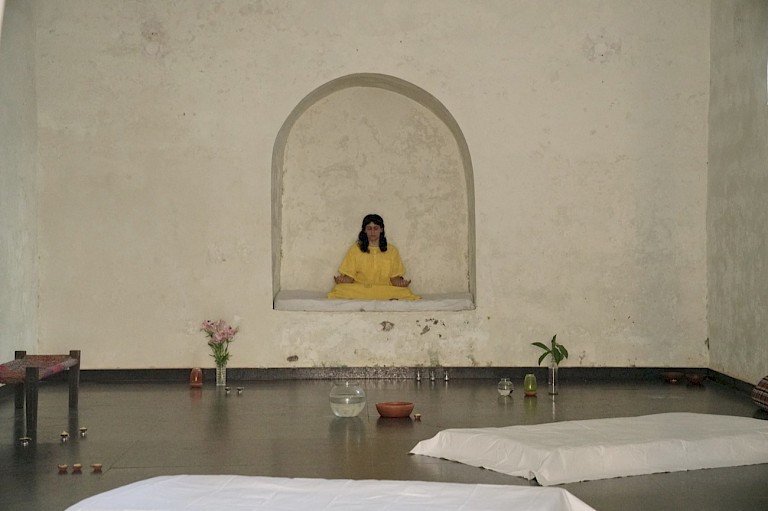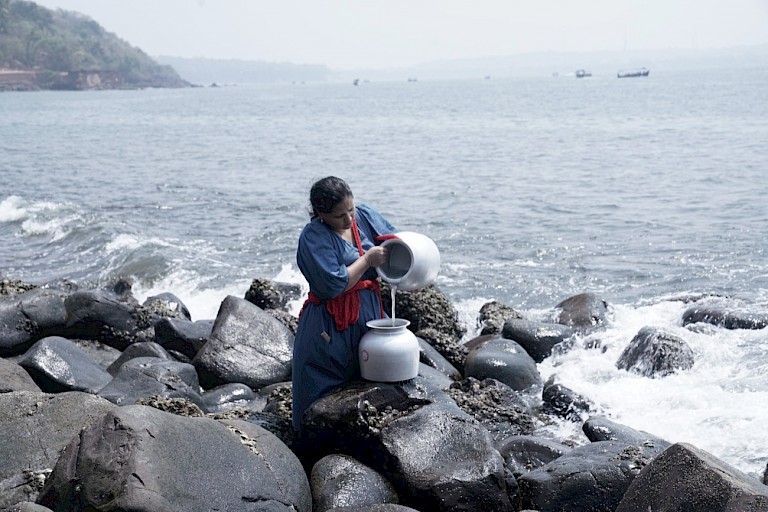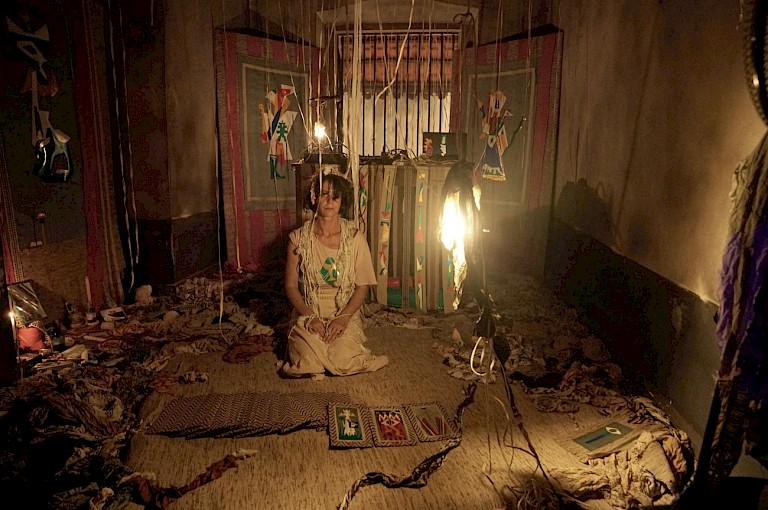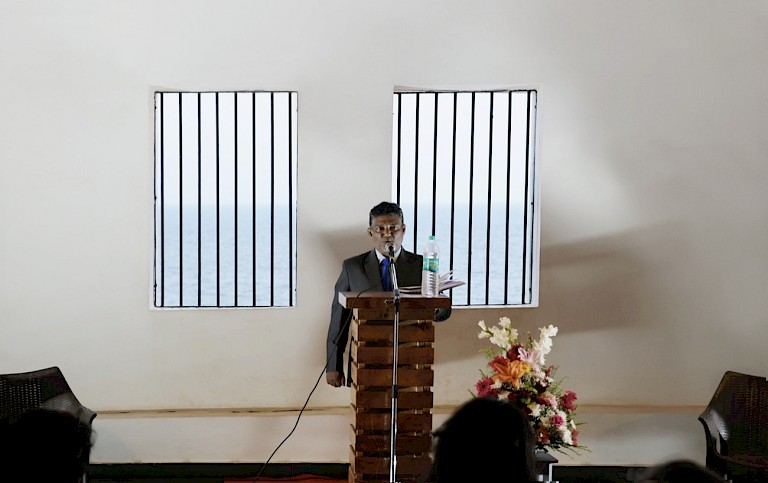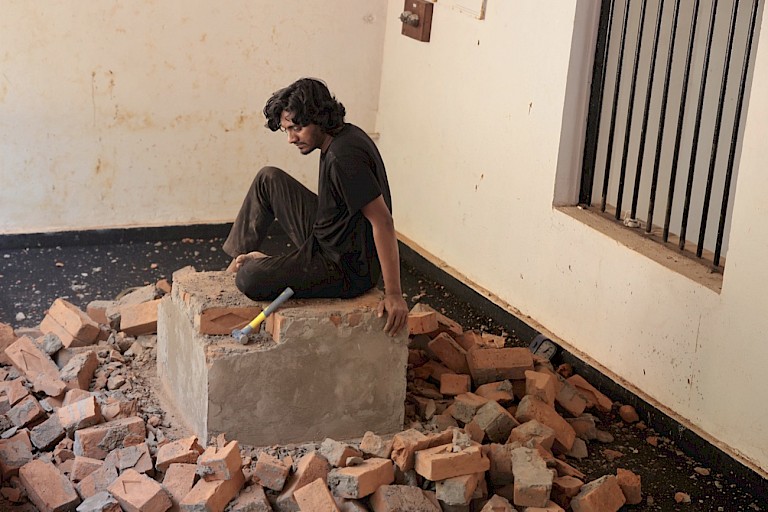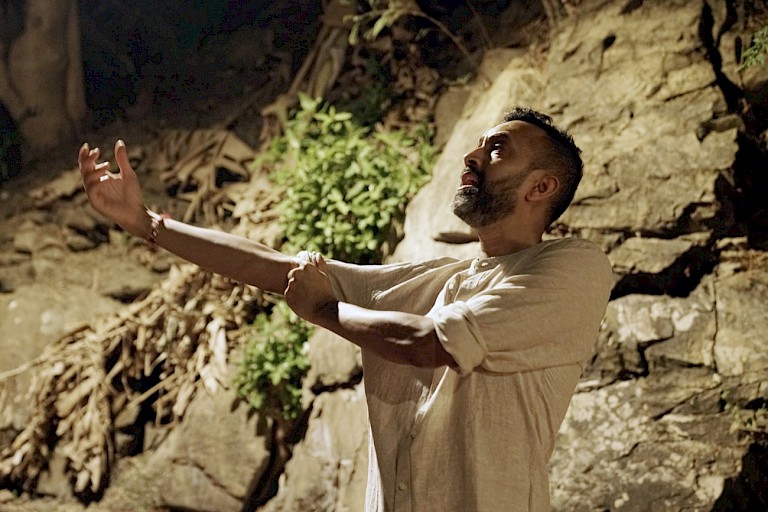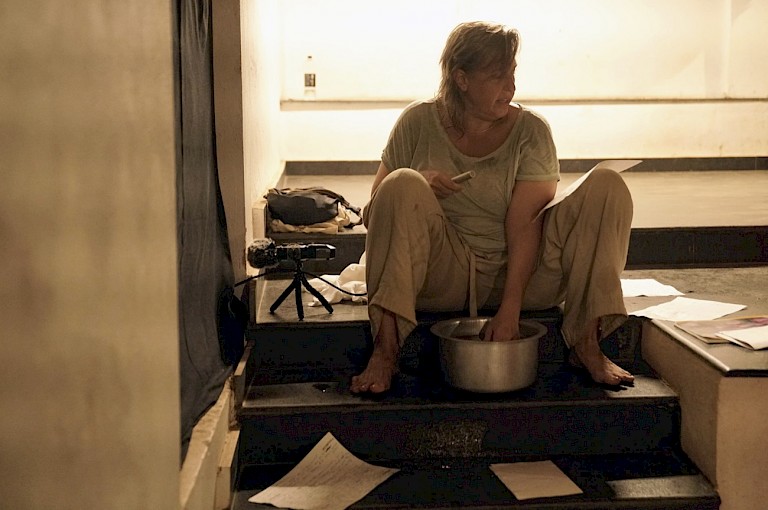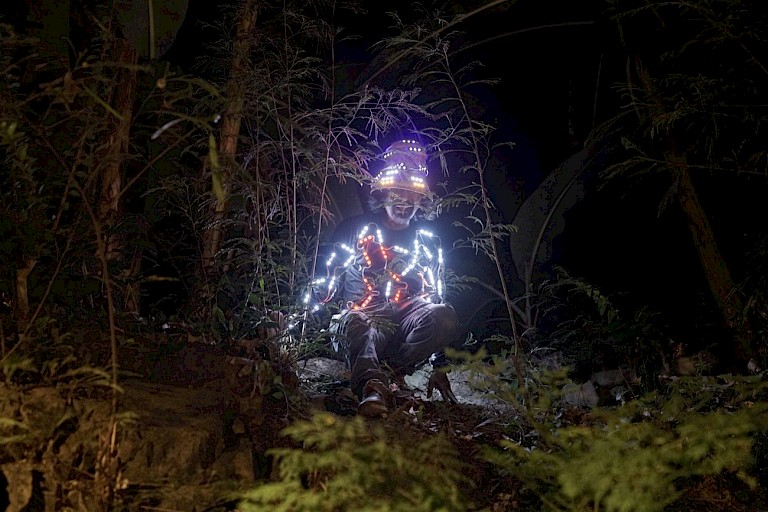



The Artist
HH Art Spaces, founded in October 2014 in North Goa, is a testament to the shift of artists gravitating towards Goa's picturesque landscapes and vibrant international community. Incepted by Romain Loustau, Madhavi Gore, and Nikhil Chopra, and later joined by Shivani Gupta and Shaira Sequeira Shetty, HH has become a hub for artistic innovation and collaboration. It specializes in contemporary live art and performance, hosting monthly international art residencies and site-specific OPEN Studio events. Artists from various domains, including visual arts, dance, music, theatre, and even culinary arts, have found a haven at HH to cross-fertilize ideas and forms.
Now operating nomadically, HH Art Spaces channels its energy through commissioned projects and partnerships, recognising the pivotal role residencies play in nurturing artists by offering the essential resources, time, and networks. A notable aspect of HH's mission is their dedication to documenting live artwork, aiming to cultivate an expansive archive and resource pool. Over six years, they have welcomed roughly 65 artists, both national and international, facilitated numerous workshops, and held 20 OPEN Studios.
Collaborations have spanned prominent institutions within and outside India, solidifying HH Art Spaces as a significant platform for live arts in South Asia. As a collective, they serve as artists, mentors, and cultural catalysts, enriching the artistic landscape of the region.
The conceptual core of "Anti-Bodies" was a meticulously crafted a tripartite foundation for the project. First, it addressed our human vulnerability to diseases and the vast unknown elements that nature encompasses. Second, it paid homage to the indomitable human spirit that persists through protests against tyrannical systems, even amid global crises. Lastly, it re-envisioned the body not just as a physical entity, but as a repository of histories and narratives, challenging conventional methods of archival decolonisation.
The project's lifecycle spanned an entire year, reflecting deep introspection and thorough planning. It's was not merely a transient artistic exhibition but a longitudinal exploration of critical global issues. Throughout its duration, "Anti-Bodies" engaged a diverse range of cultural practitioners. These collaborators were tasked with reimagining and redefining concepts of the body, borders, and their relationship with mythology, magic, and healing. This operational strategy ensured the assimilation of varied perspectives and methodologies.
The project's location played a pivotal role. The 17th Century Portuguese prison adjacent to Aguada Fort didn't just serve as a backdrop; it resonated as a symbol of history, body, and freedom. The venue was chosen for its historical significance, ensuring attendees not only experienced the art but also felt the weight of history.
In its operational phase, "Anti-Bodies" integrated into the India/UK Together cultural exchange, which marks India's 75th anniversary of independence. This strategic alignment allowed it to benefit from the broader program's reach and resources. The India/UK Together initiative showcased a myriad of events across multiple domains, and "Anti-Bodies" prominently stands within its "Science, arts, and heritage in times of change" program.
The climax of this year-long journey was a 24-hour performance marathon, a testament to the project's ambitious nature. Scheduled from 17-18 March, this event takes place at the Central Jail Aguada in Goa. Moreover, leveraging digital platforms, the entire marathon was live-streamed via The Tetley's website, ensuring global access. This digital integration not only widens its audience base but also ensures its resonance in the age of virtual engagement.
A diverse group of artists from Bangladesh, India, Sri Lanka, and the UK, each with unique perspectives and artistic languages, formed the project's heart. Their performances traversed themes of vulnerability, resistance, and reclamation, echoing the project's foundational principles. To ensure quality and depth, artists underwent a residency program, enabling them to fine-tune their contributions.
Each artist brought their distinctive approach to the project. Their profiles range from textile exploration to performance art, and from vocal improvisation to archival research. This blend guaranteed a rich tapestry of experiences for the attendees.
Operational collaborations play a pivotal role in the project's execution. While The Tetley, Leeds, offers digital broadcasting capabilities, HH Art Spaces in Goa facilitates the ground-level operations. The British Council’s India/UK Together Season of Culture provides robust support, reinforcing the project's stature.
In summary, "Anti-Bodies" operates as a synergistic blend of profound conceptual depth, operational prowess, and collaborative strength. By intertwining history, art, and global themes, it carves a niche for itself in the realm of contemporary cultural endeavors.
"Anti-Bodies" stands as a poignant testament to the power of art and cultural initiatives in addressing, reframing, and reimagining complex global issues. Its layered themes and expansive scope intertwine to create ripples of impact across various dimensions.
At its core, "Anti-Bodies" delves into the fragility of the human condition, starting with the vulnerability of our bodies to diseases and extending to the vast, often intimidating unknowns of nature. In a world grappling with global health crises and an ever-changing environment, this theme resonates deeply. By focusing on such immediate and universal concerns, the project pushes its audience to confront and contemplate their own susceptibilities and uncertainties.
Further amplifying its relevance is the emphasis on the human spirit's resilience, epitomized by bodies in protest. As waves of political unrest, totalitarianism, and environmental challenges sweep across the globe, "Anti-Bodies" shines a spotlight on those defiant souls who rise in resistance. The project provides a platform for these stories of resistance and, in doing so, offers both a tribute to their courage and a call to action for its audience.
The third pillar of the project—reimagining the body as a vessel of history and decolonisation—addresses deeper, long-standing issues of identity, colonialism, and cultural memory. The innovative approach of "Anti-Bodies" to view the body as a "decolonial device" moves the discourse away from cold, distant archival processes to warm, intimate narratives of reclamation. By positioning the body as a site of history and memory, "Anti-Bodies" pushes for a more personal, immediate form of decolonistion, driven by the very regions and people that experienced colonisation. This shift in perspective is both empowering and transformative, urging individuals to reclaim their histories, stories, and identities.
The project's setting, the 17th Century Portuguese prison by Aguada Fort, further intensifies its impact. As attendees step into this venue steeped in history, they are transported to a time where themes of captivity, freedom, and resistance were starkly palpable. This immersive experience deepens the engagement, making every performance, narrative, and artistic expression even more potent.
The roster of participating artists brings diverse voices from Bangladesh, India, Sri Lanka, and the UK, each adding depth and nuance to the overarching themes. Their varied backgrounds and unique artistic languages ensure that "Anti-Bodies" doesn’t offer a singular narrative but a rich tapestry of experiences, perspectives, and interpretations. This diversity is instrumental in ensuring the project's wide-reaching impact, resonating with audiences from different walks of life.
The digital dimension, particularly the 24-hour live-streamed performance marathon, ensures that "Anti-Bodies" transcends geographical boundaries. By making the project accessible to a global audience, its messages, themes, and narratives find resonance far and wide, amplifying its reach and influence.
Finally, the project's alignment with the India/UK Together initiative, celebrating 75 years of India's independence, contextualises it within a larger cultural exchange. "Anti-Bodies" not only benefits from this broader framework but also contributes significantly to it, reinforcing the bonds between two nations through shared histories, challenges, and aspirations.
In essence, the impact of "Anti-Bodies" was multi-faceted. It operated as a mirror, reflecting societal vulnerabilities and strengths; a beacon, guiding the way toward introspection and action; and a bridge, connecting past, present, and future in a dance of art, history, and human spirit.
